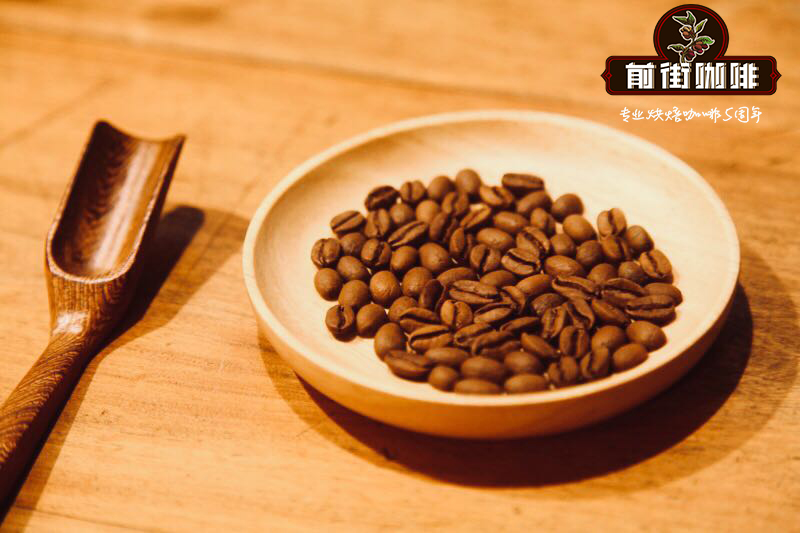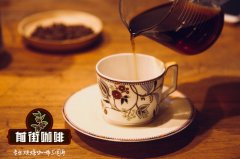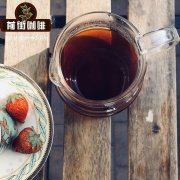Chiko McGaru, Karnataka, India | Meso Gold Brick Mysore local small farmers wash Robsta

Professional coffee knowledge exchange more coffee bean information please follow the coffee workshop (Wechat official account cafe_style)
Chiko McGaru, Karnataka, India | Masojin brick Mysore local small farmers wash the flavor of Robusta?
The early Arabs monopolized the cultivation and marketing of coffee, and the coffee sold to Europe was the only monopoly, and the control of coffee seeds and saplings was very strict. In 1670, an Indian Muslim practitioner, Baba Budan, went on a pilgrimage to Mecca, Arabia. he found coffee in the port of Mocha in Yemen, hid seven coffee seeds, took a boat home, and planted the coffee in the Chickmagalur mountains in the south. In honor of this man, the Indians also call Mount Chickmagalur the Baba Budan Mountain. Today Chickmagalur is indeed a very important coffee producer in India. Indian coffee was replanted on the Indonesian island of Java in 1696, so coffee was grown very early in India.
Coffee cultivation in India is located in the south, with moist mountain terrain, 8-1600 meters above sea level. Very few coffee producing areas in the world have as many varieties as here: forests, herbs, shrubs, flowers and animals make up a spectacular paradise. It is generally tropical in summer and cool in winter. Provide the best environment in the world for all coffee farmers. Coffee blooming is a spectacle worth experiencing. People can see the landscape dotted with white flowers throughout the flowering season, emitting an attractive fragrance, bees and butterflies flying among the flowers. The coffee flowers in the whole area are covered with a sea of white flowers. Like jewels on a coffee farmer's crown. India's coffee industry is currently dominated by southern India, with Karnataka, Kerala and Tamil Nadu accounting for more than 90% of the country's coffee production. At present, about 250000 people in India grow coffee beans, and almost 80% of the country's coffee production is exported to Germany, Russia, Spain, Belgium, Slovenia, the United States, Japan, Greece, the Netherlands, France, Italy and other places. Most of the exported coffee beans are transported through the Suez Canal.
India is a country that mainly drinks tea, but its coffee production occupies a place in the world, and it has both Robusta and Arabica. It is also one of several countries that have both water washing and sun treatment. Indian coffee is grown mainly in the areas from the Western Gaozhi Mountains in southern India to the Arabian Sea, with coffee sold under the names of Maiso and Malaba. India's coffee production ranks fifth in the world. It is mainly grown in the southwest between the Western Ghats Mountains and the Arabian Sea, and is divided into three major provinces: Karnataka, Kerala and Tamil Nadu. Both Robusta and Arabica are cultivated, and Robusta is more than Arabica.
India is the only country where both Luo seed and Artemisia seed have both sun drying and washing treatment, and have a normal supply and continuous commercial export. It also exports boutique Robusta coffee beans. Mysore is located in the Chikmagalur producing area of the city of Karnataka State, India. Other relatively large producing areas are Biligiri, Coorg, Babundagiri, Chikmalagur and Shevaroy. Mysore is a gold mine producing area in India, and it is also rich in coffee beans. It is planted at 1200 meters above sea level. The most specially selected coffee beans are of excellent quality. The appearance of beans reaches 18 +-19 goals to wash coffee beans, called Mysore Nuggets Extra Bold (Chinese translation for MaxoGold bricks or nuggets), MNEB with the first letter combination. MNEB beans are also at the top of the Indian bean classification (Indian official coffee beans are classified according to Romsda and Arabica, while MNEB, the highest number of beans in the Arabica species, plantation-grown arabica). The coffee produced by Mysore is named "Nuggets" with gold nuggets and gold bricks, and the beans selected must be clean and beautiful washed beans with more than 18 eyes before they can be called Mysore Nuggets Extra Bold.
Masojin Brick, the highest class proposed by the Indian Coffee Bureau, because MNEB's beans are quite large in diameter, they use (Extra Bold) to describe her bean shape and directly use it as a grading standard. Its sweet flavor and rich aroma enjoy a good reputation in Europe. In the coffee competition assisted by the Indian Coffee Bureau, Macintosh particularly attracted many positive comments from international judges. The color of raw beans is green and complete, with roasted nuts, woody tea, caramel syrup, spices, greasy and gentle taste. Strong spice, dry flowers and fruits, heavy ripe fruit, thick sticky finish, rich and delicate sweet aroma.
Flavor description: roasted nuts, wooden tea, spices, creamy, gentle taste.
Producing area: Chico Maigaru, Karnataka State (Chikmagalur)
Producer: Chikmagalur local small farmers
Variety: Kent (S795)
Grade: Royal MNEB18--19 items
Altitude: average 1200 m
Treatment method: traditional washing treatment
Qianjie recommended cooking:
Filter cup: Hario V60
Water temperature: 90 degrees
Degree of grinding: small Fuji 3.5
Cooking methods: the ratio of water to powder is 1:15, 15g powder, the first injection of 25g water, 25 s steaming, the second injection to 120g water cut off, waiting for the powder bed water to half and then water injection, slow water injection until 225g water, extraction time about 2:00
Analysis: using three-stage brewing to clarify the flavor of the front, middle and back of the coffee. Because V60 has many ribs and the drainage speed is fast, it can prolong the extraction time when the water is cut off.
Important Notice :
前街咖啡 FrontStreet Coffee has moved to new addredd:
FrontStreet Coffee Address: 315,Donghua East Road,GuangZhou
Tel:020 38364473
- Prev

Minas Djilas region, Brazil | Reunion Bourbon (also known as Lau) on the island of Reunion
Professional coffee knowledge exchange more coffee bean information please follow the coffee workshop (Wechat official account cafe_style) Brazil Minas | Djilas area tanning method | Reunion Reunion Island pointed bourbon (also known as Laurina, Leroy) flavor? When it comes to Arabica, it is actually like a big family, and there are many different members in the family, among which the one who has the greatest impact on the coffee world
- Next

2016COE 2nd Costa Rica | Central Valley [Honey King] Kaddura, Brumas producing area
Professional coffee knowledge exchange more coffee bean information please follow the coffee workshop (Wechat official account cafe_style) 2016COE 2nd Costa Rica | Central Valley [Honey King] Brumas producing area Kaddura Red Honey processing Flavor? Brumas Manor Microprocessing Plant (Brumas del Zurqui), which has the nickname of the King of Honey Heaven, is famous in Taiwan's boutique coffee industry. Blumar.
Related
- Detailed explanation of Jadeite planting Land in Panamanian Jadeite Manor introduction to the grading system of Jadeite competitive bidding, Red bid, Green bid and Rose Summer
- Story of Coffee planting in Brenka region of Costa Rica Stonehenge Manor anaerobic heavy honey treatment of flavor mouth
- What's on the barrel of Blue Mountain Coffee beans?
- Can American coffee also pull flowers? How to use hot American style to pull out a good-looking pattern?
- Can you make a cold extract with coffee beans? What is the right proportion for cold-extracted coffee formula?
- Indonesian PWN Gold Mandrine Coffee Origin Features Flavor How to Chong? Mandolin coffee is American.
- A brief introduction to the flavor characteristics of Brazilian yellow bourbon coffee beans
- What is the effect of different water quality on the flavor of cold-extracted coffee? What kind of water is best for brewing coffee?
- Why do you think of Rose Summer whenever you mention Panamanian coffee?
- Introduction to the characteristics of authentic blue mountain coffee bean producing areas? What is the CIB Coffee Authority in Jamaica?

